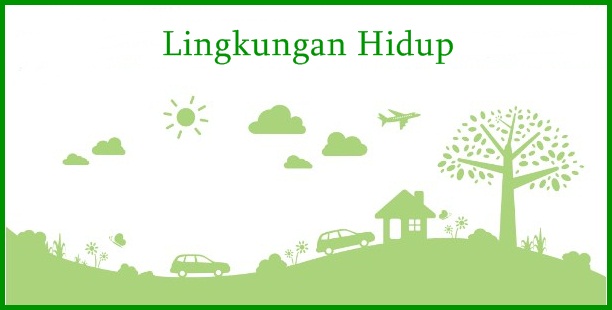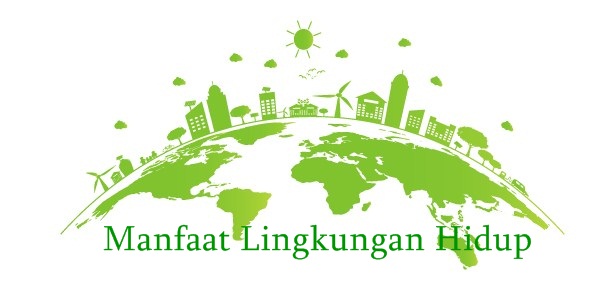Environmental Benefits
What is the environment and what are the benefits of the environment? The environment is the unity of all living things (biotic) and not alive (abiotic), includes various elements of the environment and its benefits, including species-wide interactions & natural resources. For a full explanation, see the Material Benefits of the Environment for Life below.
Table of Contents
What is Environment?

The environment is the unity of all living things (Biotic and non-living (Abiotic), includes various elements of the environment and its benefits, including species-wide interactions & natural resources.
Some experts have also submitted opinions on the definition of the environment among them ;
stoned ; The environment is everything that surrounds us, both objects and living things that are affected by human activities.
Soemarwoto ; The environment is all objects and conditions that exist in the space we occupy and affect our lives.
Emil Salim ; The term environment refers to all objects, condition, condition, and also the influence that is in the space in which we live, and affect the life around them, whether it's an animal, plants, or even human.
According to the Ecological Dictionary, The term environment refers to the interactions between living and non-living things that occur naturally on Earth or in some areas.
Not only the definition of the experts, concerning the environment has also been stated in the Act, namely According to Law No. 32 year 2009, environment is the unity of all things, strength, condition, living beings, including humans and their behavior, which affects nature itself, survival and well-being of humans and other life. creature.
Environmental Benefits

Good environmental quality is very important to create a healthy human life, peace and prosperity. Quality is considered good if there are biological and physical elements that can support the life of various living and non-living things.
In this case, the environment is very influential. Then what are the environmental benefits??
- Air is used to breathe. Oxygen is a vital gas for the life of living things. Plants use carbon dioxide in photosynthesis.
- Water is used for drinking and meeting daily needs such as bathing, washing or even for industrial needs.
- Food for living things. Fertile and nutrient-rich soil will produce foodstuffs such as rice, cassava, ubi, vegetables and fruits for human survival.
- Forests regulate air and water conditions. Forests can provide abundant oxygen and absorb carbon dioxide so the temperature is not too high. Forests can also regulate water systems and prevent erosion. During rainy season, there will be no floods and the dry season will not last long.
- Minerals that when used, can increase income and also serve as industrial raw materials. Gold is used for jewelry, petroleum as fuel, coal as energy.
- Energy sources like wind, sun, air, and geothermal can be used to generate electricity.
- Land and land can be used for a variety of purposes, For example, for residential, urban areas and others.
- Animals and a variety of plants can be used as food sources.
- Microorganisms play a role in breaking down the remains of living things.
- Forests function to maintain water supply in the dry season and also as a place to live for various kinds of living things.
- Earth as a foothold and daily activities – day
- Carbon dioxide as a substance in the process of photosynthesis in plants
- Natural resources (SDA) contained in the environment can be used to meet the needs of daily life
- Animals and plants as a source of food for omnivores (eater of all)
- Plants as a source of food for herbivores (plant-eating animals)
- Animals are a source of food for carnivores (meat-eating animal).
Read Also : Biotic and Abiotic Components
Environmental Example
There are different kinds of environment, namely natural and artificial environment, which the natural environment is a group of biotic components & abiotic become a community, The goal is to create a comfortable life, peace, &calm.
While the artificial environment is a place that is deliberately created by humans for various purposes or purposes in supporting life.
The following are examples of natural environment and artificial environment :
Natural Environment :
- According to
- River
- Forest
- Bukit
- Mountain
- Lake
- Valley
- Beach
- Samudera
- Coral reefs
Artificial Environment :
- Reservoir
- Pool
- House
- School
- Ricefield
- Garden
- garden
- Tourist attraction
- Terracing
- Conservation area
Message :
The environment is the unity of all living things (Biotic and non-living (Abiotic), includes various elements of the environment as well as its benefits, including species-wide interactions & natural resources.
1. Air is used to breathe. Oxygen is a vital gas for the life of living things. Plants use carbon dioxide in photosynthesis.
2. Water is used for drinking and meeting daily needs such as bathing, washing or even for industrial needs.
3. Food for living things. Fertile and nutrient-rich soil will produce foodstuffs such as rice, cassava, ubi, vegetables and fruits for human survival.
1. According to
2. River
3. Forest
4. Bukit
5. Mountain
6. Lake
7. Valley
8. Beach
9. Samudera
10. Coral reefs
1. Reservoir
2. Pool
3. House
4. School
5. Ricefield
6. Garden
7. garden
8. Tourist attraction
9. Terracing
10. Conservation area
Animals and plants as a source of food for omnivores, Plants as a source of food for herbivores, animals as a source of food for carnivores.
Such is our explanation of Matter 15+ Environmental Benefits. Read it too Rice Field Ecosystem. Protect and protect our environment ! May be useful.
The post Environmental Benefits appeared first on YukSinau.co.id.
